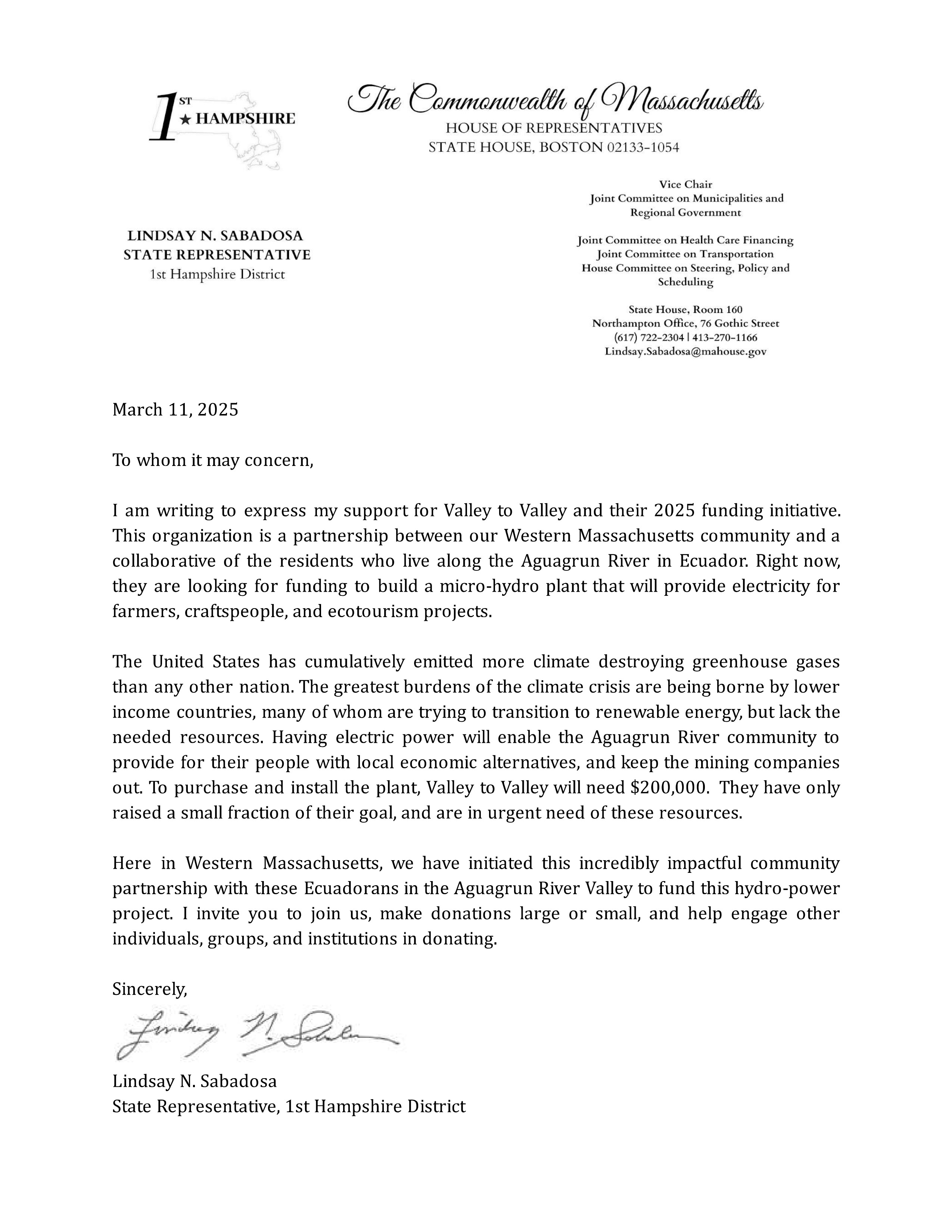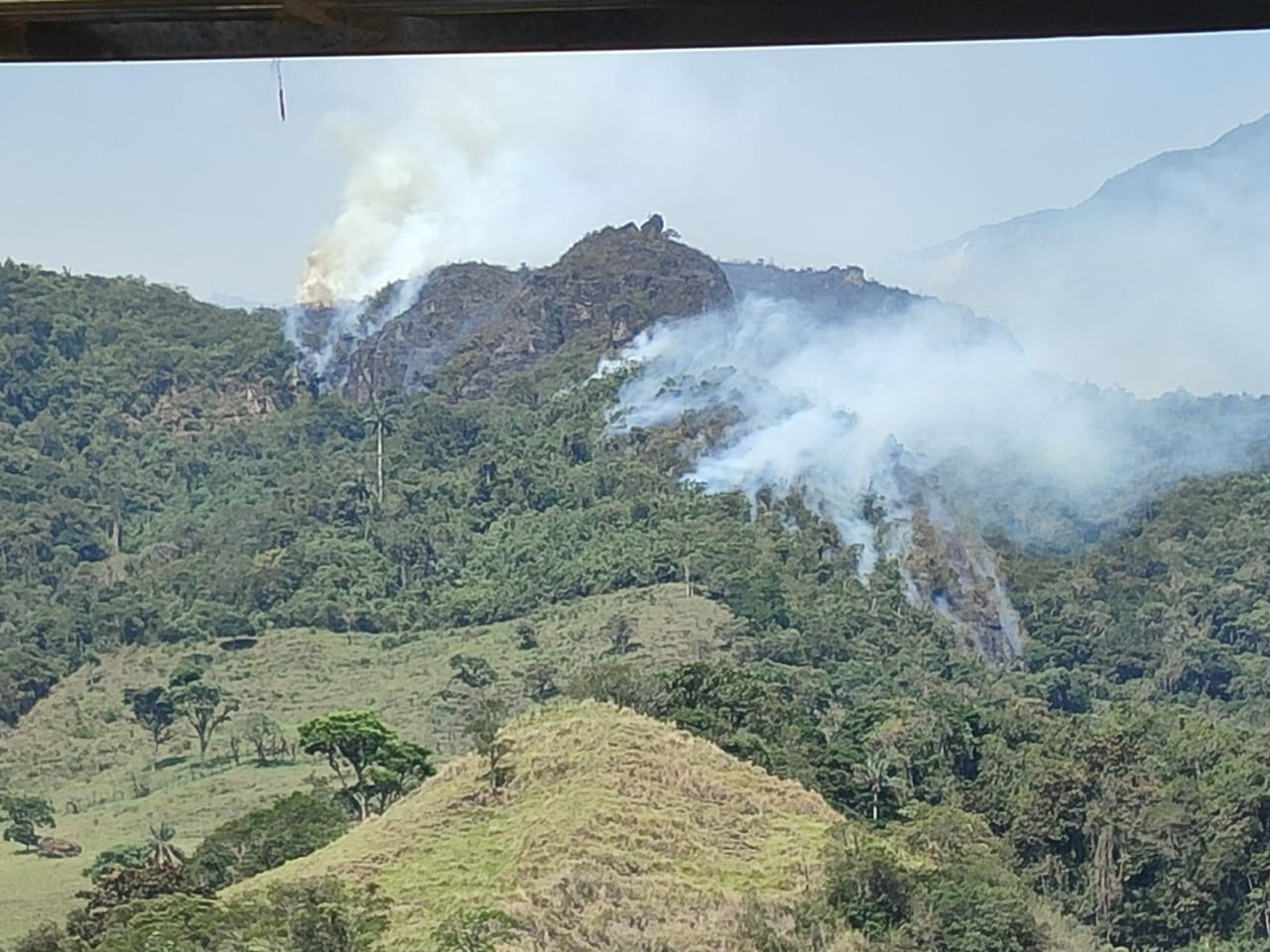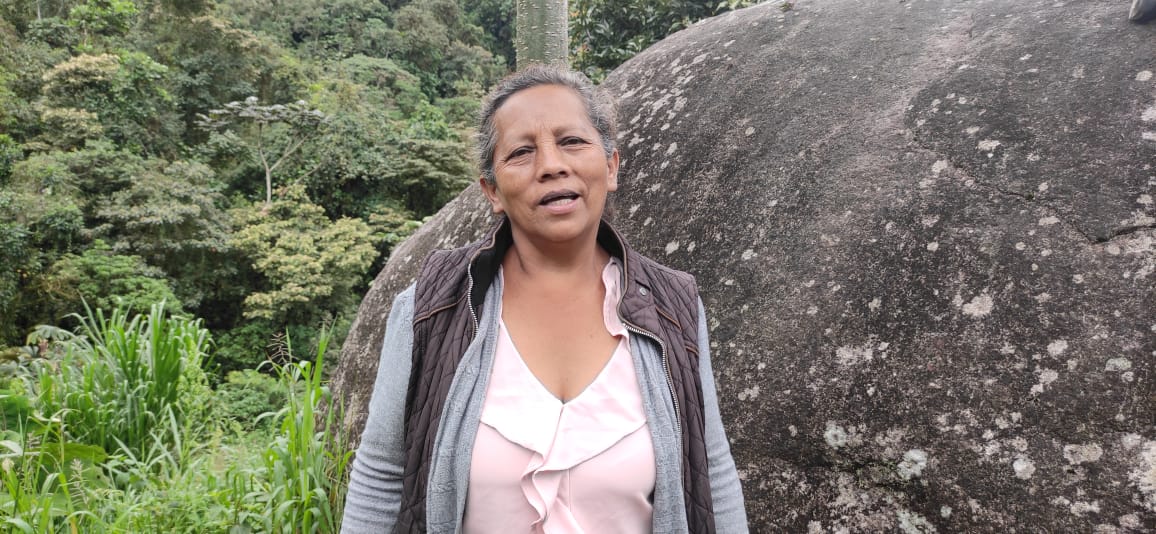-
Endorsement from Rep. Lindsay Sabadosa

-
Ecuador’s Drought

Denis Laporta
In the last months of 2024, Ecuador has gone through a drought that has plunged the population into darkness, during 3 long months with electricity shortages up to 14 hours a day. The large central dams of the country, which supply 70 percent of electricity consumption, face a delay in the rain cycle, especially along the eastern slopes of the Andes where the mega-dams built by the Ecuadoran state have been located (for example, the Paute complex or the even larger central dam called Coca-Codo Sinclair).
Without a doubt, part of the reason for these extreme events is climate change, which has become much more noticeable year after year. But this isn’t the only reason. People are beginning to recognize that the central administration of the hydroelectric power generation has focused on turbine water in the hydrographic basin. Very few public and private generators have invested in the maintenance of the contributor basins, the water above the dams, with the purpose of taking care of forest cover and the anthropic activities in the communities and the long-term care of the river and its tributaries. Although a hydroelectric dam pays to maintain its turbines and installations, it puts almost nothing into caring for, protecting, producing and growing the flow of water, in quality and quantity.
In the region of Intag, we also saw a considerable reduction in rain. More than other years, the guardians of the forest report a migration of certain species of birds to higher climatic zones in order to escape zones that are getting dry (for instance, the bird called Zamarrito pechinegro/Eriocnemis nigrivestis, which is very emblematic of the biodiversity of our valley).
The decrease in natural humidity in the tropical forests has led to the death of orchids in the middle of the forest and – for the first time in the history of the valley – fires in the rainforest (with an estimated loss of 150 hectares between September and October of 2024). Faced with such a situation, with the help of the Corporación Toisán, a fire brigade was put together with community volunteers.
Given such a situation, those of us who support Hidroaguagrún are even more convinced that small projects to generate clean energy are part of the solution: when they are on a small scale, respect the minimum river flow, are decentralized instead of centralized, and are close to the point of consumption to avoid transmission loss in the electrical network. Above all, as in the case of Hidroaguagrún, the production of hydro-electricity is highly positive when it’s tied to the care of the microbasin, reinvesting surpluses in the protection, conservation, and restoration of the ecosystems, as well as in the ecological transition of the local economy.
Denis Laporta is a founder of Corporación Toisán, the main social organization in the Intag Valley. He is an administrator of the Association for the Production of Renewable Energy Aguagrun River.
-
Meet the vice-president of HidroAguagrun

Carmen Romelia Aguirre, 62 years old, is the vice-president of the Asociación de Producción de Energía Renovable Río Aguagrún (HidroAguagrun).
As a farmer and the owner of a small trout farm, she lives in the community of Cerro-Pelado in the upper part of the Aguagrún river basin. Her home is located in an isolated place where the national electricity grid doesn’t reach. She’s one of the first families to install their own hydraulic turbine to generate electricity for home use. She is a defender of the environment.